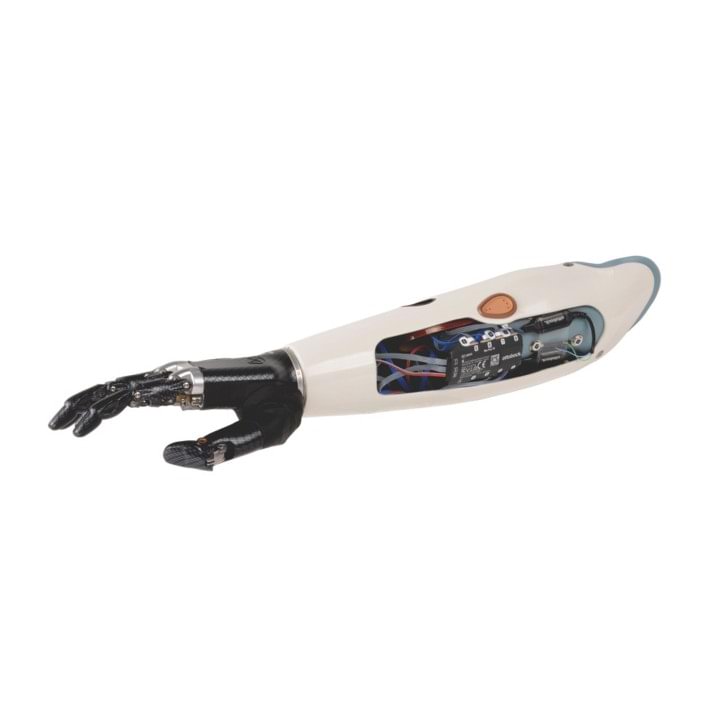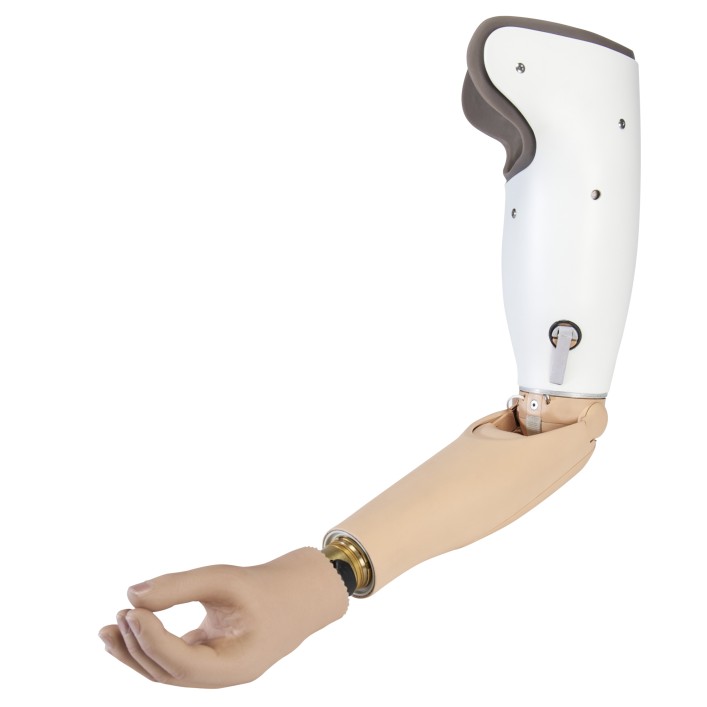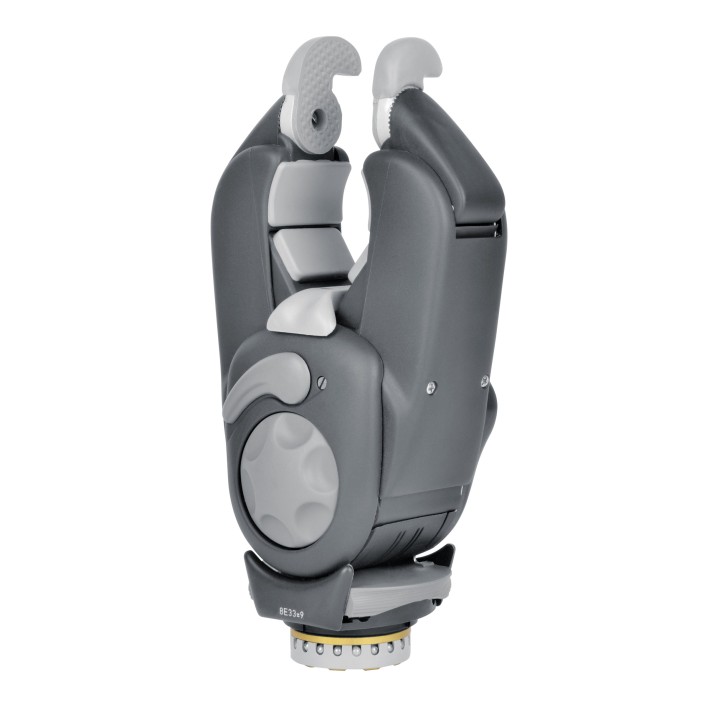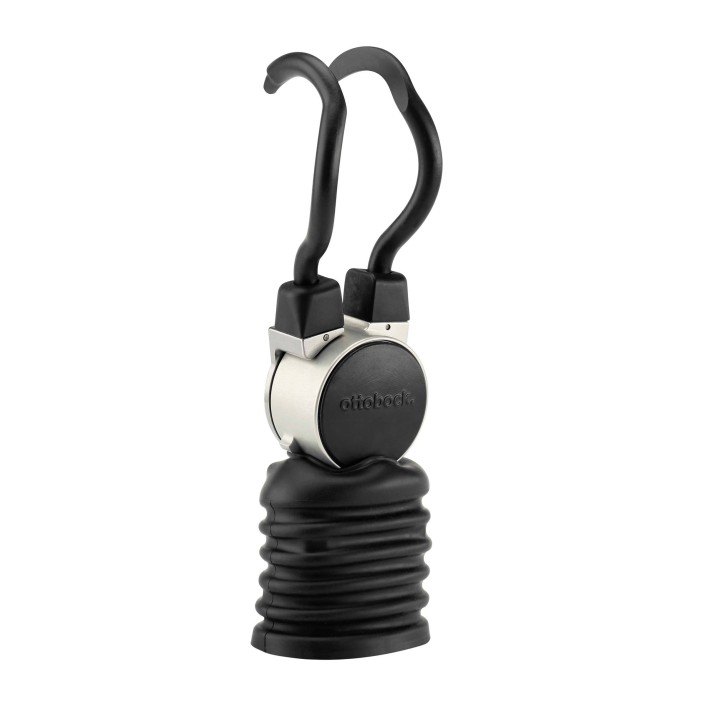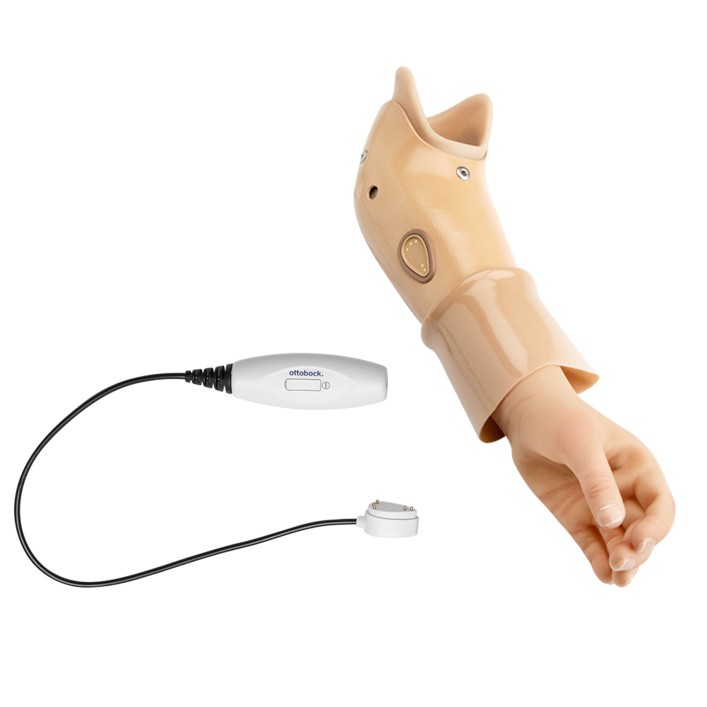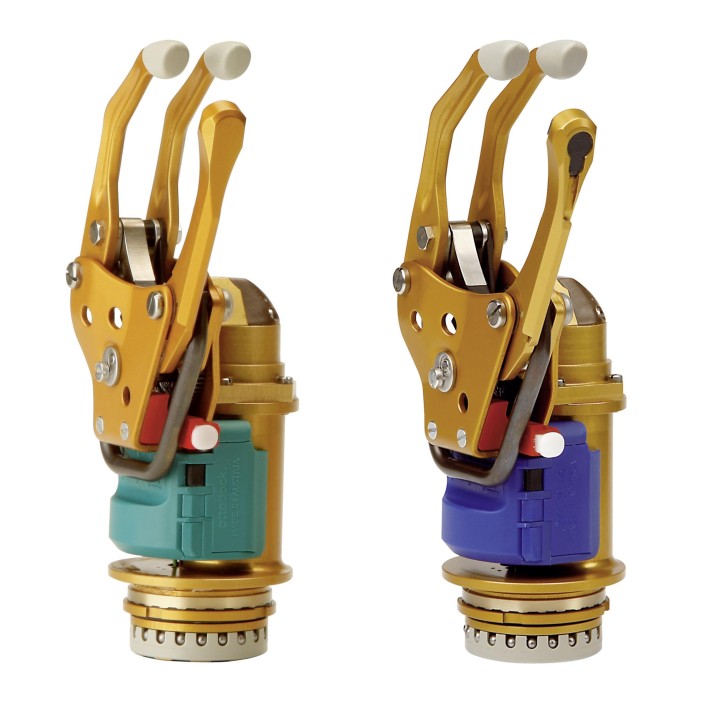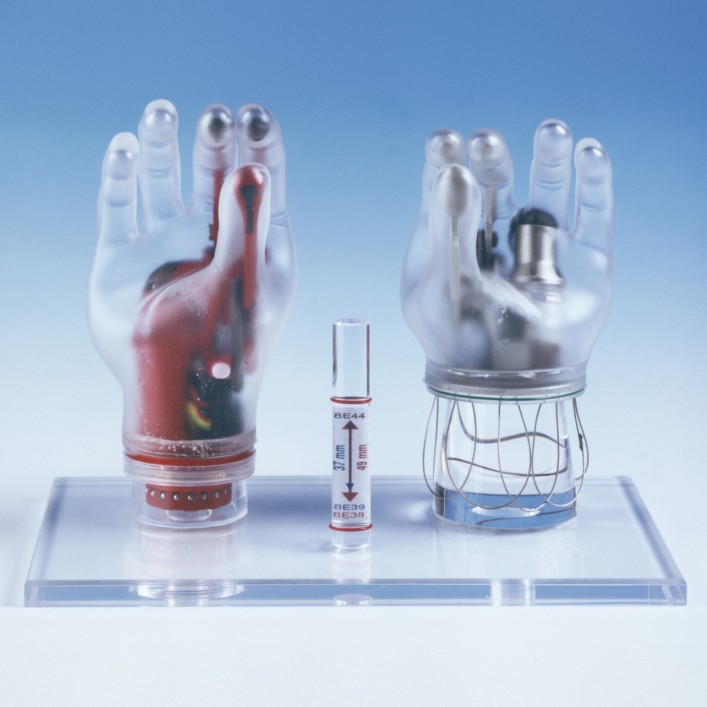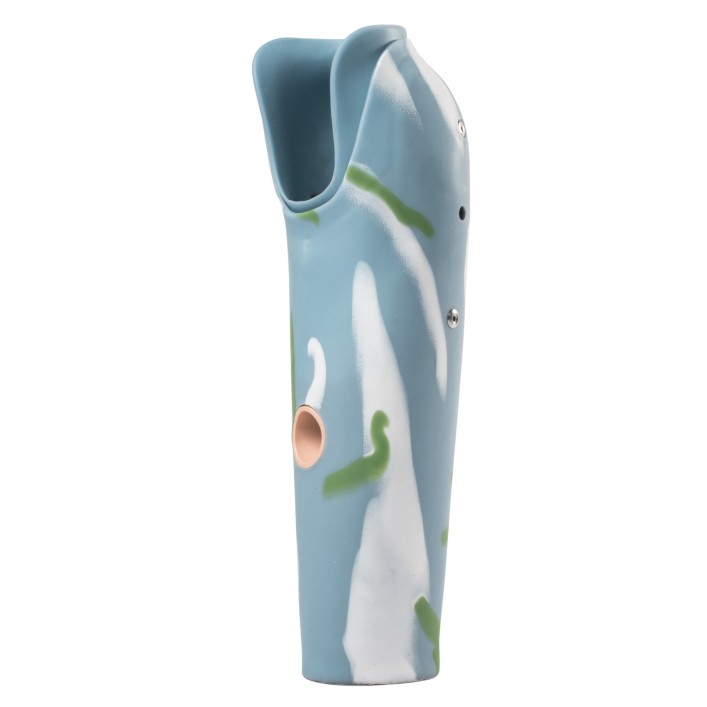Myoelectric prosthetics
Myoelectric-controlled arm prostheses are externally powered prostheses, which means that they are not driven by the muscle strength of the patient, but with the aid of electric power. The word “Myo” is derived from Greek: mys (“muscle”). A biochemical process generates electrical tension in the microvolt range every time a muscle contracts. This tension can be measured on the skin. This also applies to the muscles remaining after an amputation.
With myoelectric arm prostheses, muscle tensions from the residual limb are usually read by two electrodes – small children start with one. The low myoelectrical impulses that lie in the microvolt range are then amplified and forwarded to the electronics of the prosthesis in the form of control signals. The great functional benefits of this prosthetic system have a decisive influence on rehabilitation results. Because myoelectric prostheses also offer an appealing design as well as wearer comfort, they have become established as the standard.


